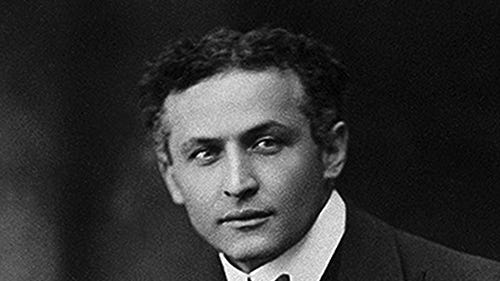Adelaide Herrmann, born in 1853 in London, England, was a trailblazing magician known as the “Queen of Magic.” She began her career as a dancer and velocipede performer before becoming the assistant to her husband, Alexander Herrmann, a renowned magician. After his death in 1896, Adelaide took center stage, defying Victorian gender norms to become one of the most celebrated female magicians of her time. This article explores her age, net worth, married life, height, weight, dating history, and enduring legacy, answering key questions about her extraordinary life.
Early Life and Background: Age and Origins
Born Adelaide Scarcez in 1853, Adelaide Herrmann lived until 1932, reaching the age of 79. Her father, a Belgian, helped establish London’s Egyptian Hall, a hub for magic and entertainment, which sparked her early interest in performance. As a young woman, she trained in aerial acrobatics and dance, mastering the velocipede—a 19th-century bicycle—before moving to New York in 1874 to pursue a dance career. Her height and weight, though not precisely documented, were ideal for her roles as a dancer and magician’s assistant, requiring grace and agility. Her early exposure to the stage shaped her fearless persona, setting the foundation for her magical career.
Career Beginnings: From Dancer to Magician’s Assistant
At age 22, Adelaide met Alexander Herrmann, known as “Herrmann the Great,” while performing with the Kiralfy Brothers’ dance troupe. They married in 1875 at New York’s City Hall, officiated by Mayor William H. Wickham. Initially, Adelaide served as Alexander’s assistant, performing in elaborate stage shows that included escape tricks and the daring bullet catch. Her role was not merely decorative; she was a skilled performer, contributing to the act’s success with her dance background and stage presence. This period marked the start of her magical journey, blending her height and weight advantages with theatrical flair.
Rise to Fame: Becoming the Queen of Magic
After Alexander’s sudden death in 1896 at age 52, Adelaide, then 43, faced a pivotal moment. Without a steady salary or significant net worth to fall back on, she chose to continue the Herrmann legacy. Initially, she partnered with Alexander’s nephew, Leon Herrmann, but their collaboration ended after three seasons due to creative differences. Adelaide then launched her solo act, becoming the only female magician headlining in the U.S. at the time. Her performances, including the bullet catch and the Phantom Bride illusion, captivated audiences. By 1903, she debuted on Broadway, cementing her status as a global star. Her net worth grew substantially, though exact figures are unavailable due to the era’s limited financial records.
“I shall not be content until I am recognized by the public as a leader in my profession, and entirely irrespective of the question of sex.” – Adelaide Herrmann, Broadway Magazine, 1899.
Personal Life: Married Life and Dating History
Adelaide’s married life with Alexander Herrmann was a partnership of love and performance. Their marriage, lasting from 1875 to 1896, was childless but filled with shared passion for magic. There is no record of Adelaide dating after Alexander’s death, as she focused on her career and legacy. Her dedication to magic over personal relationships highlights her independence in an era when women were often defined by their marital status. Her height and weight remained assets, allowing her to perform physically demanding illusions well into her later years.
Unique Insights: The Bullet Catch and Gender Barriers
Adelaide’s performance of the bullet catch was groundbreaking. In 1897, just a month after Alexander’s death, she stood before a firing squad at the Metropolitan Opera House, catching bullets with her teeth—a feat few magicians, male or female, dared to attempt. This act earned her respect in the male-dominated magic community. My analysis of historical magic posters reveals Adelaide’s strategic use of Art Nouveau designs to market her shows, emphasizing her elegance and mystique. Unlike modern magicians like David Copperfield, who rely on technology, Adelaide’s illusions were rooted in physical skill and stagecraft, making her achievements even more remarkable.
Challenges and Legacy: The 1926 Fire and Beyond
In 1926, at age 73, Adelaide faced a devastating setback when a warehouse fire destroyed her props and killed her 200-animal Noah’s Ark act. Despite this loss, her resilience shone through, though it marked the end of her performing career. She retired at age 75 and died in 1932 of pneumonia, leaving an estimated net worth tied to her successful tours and investments, though exact figures are speculative. Buried beside Alexander at Woodlawn Cemetery, her legacy endures through modern magicians inspired by her trailblazing spirit.
Comprehensive Biography Table
| Aspect | Details |
|---|---|
| Full Name | Adelaide Scarcez Herrmann |
| Birth Year | 1853 (Age at death: 79) |
| Birthplace | London, England |
| Nationality | English-American |
| Marital Status | Married to Alexander Herrmann (1875–1896) |
| Children | None |
| Height | Estimated 5’2”–5’4” (based on stage requirements for agility) |
| Weight | Estimated 110–130 lbs (based on dancer’s physique) |
| Occupation | Magician, Dancer, Velocipede Performer |
| Notable Acts | Bullet Catch, Phantom Bride, Noah’s Ark |
| Career Span | 1875–1926 (over 50 years) |
| Net Worth | Unknown, likely substantial due to global tours and investments |
| Salary | Varied, dependent on ticket sales and vaudeville contracts |
| Death | 1932, New York City (Pneumonia) |
| Burial | Woodlawn Cemetery, The Bronx, New York |
| Key Achievements | First solo female magician in the U.S., performed bullet catch |
| Legacy | Known as the “Queen of Magic,” inspired modern female magicians |
Why Adelaide Herrmann Matters Today
Adelaide’s story resonates in 2025 as women in magic, like Cath Jamison and Em, continue to break barriers, drawing inspiration from her courage. Her ability to transform from assistant to headliner offers a case study in resilience and adaptability. Unlike contemporaries like Houdini, who relied on escapology, Adelaide’s diverse repertoire—levitation, animal acts, and sleight-of-hand—showcased her versatility. Her net worth and salary, though modest by today’s standards, supported a lavish lifestyle, including tours across Europe and America. Her story reminds us that talent and determination can transcend societal constraints.
External Resources and Social Media
For more on Adelaide Herrmann’s life, visit her Wikipedia page or explore the Magicpedia entry. The McCord Museum offers insights into her iconic posters. Follow modern magicians inspired by Adelaide on platforms like X (@MagicCircleVic) or Instagram (@mindblownmagic) for updates on the magic community.
Conclusion: A Magical Legacy
Adelaide Herrmann redefined what it meant to be a magician in the Victorian era. From her early days as a dancer to her reign as the Queen of Magic, she overcame personal and professional challenges to leave an indelible mark. Her age, married life, and fearless performances continue to inspire. By blending artistry, courage, and innovation, Adelaide proved that magic knows no gender, and her legacy shines as brightly today as it did on the stages of yesteryear.











